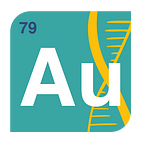Isolated Blumeatin from Sambong: Potential Alternative Treatment for Neurodegenerative Diseases
Helene Shoshana Kong
“Blumeatin acts as a competitive inhibitor and a noncompetitive inhibitor of BuChE and AChE, respectively. With these results, blumeatin could be a potential lead as a drug treatment for AD because of its butyrylcholinesterase selectivity.” — Acero and Amor (2022)
Filipino researchers Rosemarie Elloisa P. Acero and Evangeline C. Amor recently published their study on finding a selective inhibitor of a cholinesterase in sambong, opening the opportunity for more studies that can lead to better drugs to treat neurodegenerative diseases, especially Alzheimer’s Disease (AD).
According to the researchers, one sign of AD is a low level of the neurotransmitter acetylcholine (ACh) which is necessary to process memories and learn. When AD is present, the amount of acetylcholine (ACh) decreases as cholinesterases create excessive hydrolysis. These cholinesterases include acetylcholinesterase (AChE) and butyrylcholinesterase (BuChE).
However, it was observed that as AD progresses, AChE activity either remained the same or lessened, while BuChE activity increased and could accumulate to become more toxic. For this reason, Acero and Amor state that the focus of forming new treatments for AD can be the inhibition of BuChE because it can be more efficient while having fewer side effects and a slower disease progression.
On the other hand, sambong, also known as Blumea balsamifera L. DC., has been used for various medical purposes and is found throughout the Philippines. From the study, Acero and Amor were able to isolate blumeatin from the sambong leaves, and with the use of molecular docking studies, concluded that blumeatin is a selective inhibitor of butyrylcholinesterase (BuChE) over acetylcholinesterase (AChE). As stated by Acero and Amor, “Blumeatin acts as a competitive inhibitor and a noncompetitive inhibitor of BuChE and AChE, respectively. With these results, blumeatin could be a potential lead as a drug treatment for AD because of its butyrylcholinesterase selectivity.”
For more information, the procedure and further discussion of the analysis of blumeatin can be found in their paper submitted to the Philippine Journal of Science.
